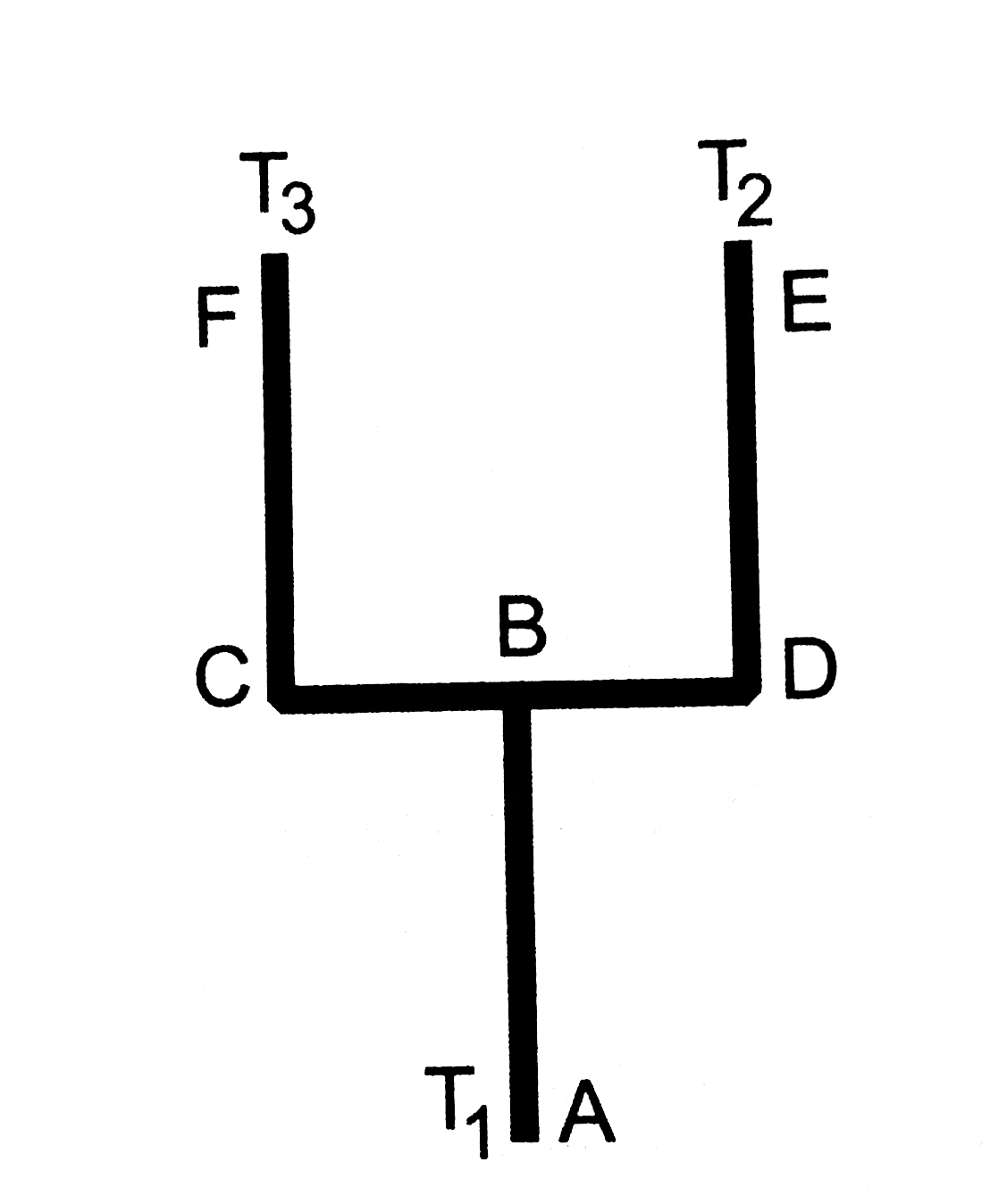A rod of negligible heat capacity has length L, area of cross-section A and thermal conductivity K. The temperature of one end is maintained at 0∘C and the other end is slowly linearly varied from 0∘C to θ∘0C in time t0 Assuming no loss of heat through the sides, find the total heat transimitted through the rod in time t0
Resistance of rod R=LKA
The temperature of left end varies linearly from 0∘C to θ0.∘C in the time t0
Temperature of left end at time t
θ=0+θ0−0t0t=θ0t0t
Heat current i=θ−0R=θR
dQdt=θ0Rt0t
∫dQ=θ0Rt2∫t00tdt
Q=θ0Rt0t202
=θ0t02R=θ0t0KA2L

Topper's Solved these Questions
Similar Questions
A rod of negligible heat capacity has length 20cm, area of cross section 1.0cm2 and thermal conductivity 200Wm−1C−1 . The temperature of one end is maintained at 0∘C and that of the other end is slowly and linearly varied from 0∘C to 60∘C in 10 minutes. Assuming no loss of heat through the sides, find the total heat transmitted through the rod in these 10 minutes.
View SolutionA rod of negligible heat capacity has length 20cm, area of cross section 1.0cm2 and thermal conductivity 200Wm−1^(@)C^(-1).Thetemperatureofo≠endisma∫a∈edat0^(@)Candtˆoftheotherendisshowlyandl∈earlyvariedom0^(@)C→60^(@)C in 10 minutes. Assuming no loss of heat through the sides, find the total heat transmitted through the rod in these 10 minutes.
View Solution
Knowledge Check
A rod of negligible heat capacity has a length of 50 cm, area of cross section 5cm2 and thermal conductivity 500 W/m∘C. The temperature of one end is maintained at 0∘C and that fo the other end is slowly and linearly varied from 0∘C to 60∘C in 20 min. Assuming no heat loss through the lateral side, the total heat transmitted throught he rod in 20 minutes is
A18 kJB8 kJC27 kJD4.5 kJ
A rod of negligible heat capacity has a length of 50 cm, area of cross section 5cm2 and thermal conductivity 500 W/m∘C. The temperature of one end is maintained at 0∘C and that fo the other end is slowly and linearly varied from 0∘C to 60∘C in 20 min. Assuming no heat loss through the lateral side, the total heat transmitted throught he rod in 20 minutes is
View SolutionA rod of negligible heat capacity has length 40cm, area of cross-section 1.0cm2 and thermal conductivity 100Wm−1∘ C−1. The temperature of one end is maintained at 0o C and that of the other end is slowly and linearly varied 'from 0∘C to 60∘C in 10min. Assuming no loss of heat through the sides', find the total heat transmitted (in J) through the rod in these 10min.
View SolutionA brass rod is in thermal contact with a heat reservoir at 127∘C at one end and a heat reservoir at 27∘C at the other end. Find the total change in entropy arising from the process of conduction of 1200 cal of heat through the rod. Does the entropy of the rod change?
View SolutionFour identical rods AB, CD, CF and DE are joined as shown in figure. The length, cross-sectional area and thermal conductivity of each rod are l, A and K respectively. The ends A, E and F are maintained at temperature T1 , T2 and T3 respectively. Assuming no loss of heat to the atmosphere, find the temperature at B.

View SolutionFour identical rods AB, CD, CF and DE are joined as shown in figure. The length, cross-sectional area and thermal conductivity of each rod are l, A and K respectively. The ends A, E and F are maintained at temperature T1 , T2 and T3 respectively. Assuming no loss of heat to the atmospere, find the temperature at B.

View SolutionFour identical rods AB,CD,CFandDE are joined as shown in figure. The length, cross-sectional area and thermal conductivity of each rod are l,AandK respectively. The ends A,EandF are maintained at temperature T1 , T2 and T3 respectively. Assuming no loss of heat to the atmosphere, find the temperature at B.

View SolutionThe left end of a copper rod (length=20cm, Area of cross section=0.2cm2) is maintained at 20∘C and the right end is maintained at 80∘C . Neglecting any loss of heat through radiation, find (a) the temperature at a point 11cm from the left end and (b) the heat current through the rod. thermal conductivity of copper =385Wm−1C−1 .
View Solution
